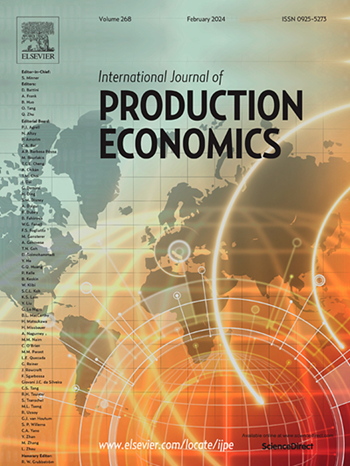Joint information sharing governance in buyer-supplier relationships: The role of partnership and monitoring in acquiring useful supplier innovations
IF 9.8
1区 工程技术
Q1 ENGINEERING, INDUSTRIAL
引用次数: 0
Abstract
Joint information sharing is considered fuel for new knowledge creation and innovation. However, within buyer-supplier relationships, this sharing activity has also been found to have a double-edged effect or a dark side. Given this dark side of joint information exchange, buyers may not obtain the desired results, including an increasing number of useful product/process innovations from the supplier. In the worst-case scenario, buyers may even have to face other repercussions in the form of loss of crucial intellectual assets as well as bargaining power. Accordingly, the activity of information exchange targeted at innovating products and processes needs to be governed through appropriate mechanisms to not only prevent all forms of exploitation but also create a productive and healthy relationship between the partners. Against this backdrop, this study aspires to examine the contingent role that partnership and monitoring play in negating the dark side of joint information exchange. Through the analysis of survey responses from 228 large and small manufacturing firms in Germany, we found that the effects of partnership and monitoring vary depending on the type of innovation received from the supplier. These results have important implications for theory and practice. While on the one hand, they fill the much-needed gap of understanding governance mechanisms, on the other hand, they provide managers with an important set of findings that can be used to better manage the process of innovation within dyadic supply chain relationships.
采购-供应商关系中的联合信息共享治理:伙伴关系和监督在获取有用的供应商创新中的作用
联合信息共享被认为是新知识创造和创新的燃料。然而,在买方-供应商关系中,这种分享活动也被发现具有双刃剑效应或黑暗面。鉴于联合信息交换的阴暗面,买方可能无法获得期望的结果,包括从供应商那里获得越来越多有用的产品/工艺创新。在最坏的情况下,买家甚至可能不得不面对其他影响,比如失去关键的知识资产和议价能力。因此,以创新产品和工艺为目标的信息交流活动需要通过适当的机制加以管理,不仅要防止一切形式的剥削,而且要在合作伙伴之间建立富有成效和健康的关系。在此背景下,本研究希望考察伙伴关系和监测在消除联合信息交换的阴暗面方面所发挥的偶然作用。通过对德国228家大型和小型制造企业的调查结果分析,我们发现伙伴关系和监督的效果取决于从供应商那里获得的创新类型。这些结果具有重要的理论和实践意义。一方面,它们填补了理解治理机制的急需的空白,另一方面,它们为管理者提供了一组重要的发现,这些发现可用于更好地管理二元供应链关系中的创新过程。
本文章由计算机程序翻译,如有差异,请以英文原文为准。
求助全文
约1分钟内获得全文
求助全文
来源期刊
CiteScore
21.40
自引率
7.50%
发文量
266
审稿时长
52 days
期刊介绍:
The International Journal of Production Economics focuses on the interface between engineering and management. It covers all aspects of manufacturing and process industries, as well as production in general. The journal is interdisciplinary, considering activities throughout the product life cycle and material flow cycle. It aims to disseminate knowledge for improving industrial practice and strengthening the theoretical base for decision making. The journal serves as a forum for exchanging ideas and presenting new developments in theory and application, combining academic standards with practical value for industrial applications.

 求助内容:
求助内容: 应助结果提醒方式:
应助结果提醒方式:


